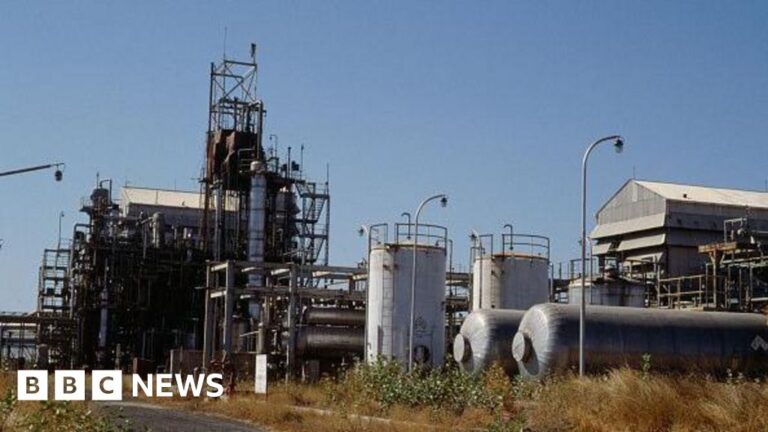Indian authorities have removed hundreds of tons of toxic waste from an Indian chemical plant that witnessed one of the world’s deadliest gas leaks 40 years ago.
In December, a court set a four-week deadline for waste disposal.
On Wednesday, the toxic waste – about 337 tonnes – was transported from the Union Carbide factory in the central Indian city of Bhopal to an incinerator about 230 km (143 miles) away.
It will take between three and nine months to process and destroy the waste.
Thousands of people died in December 1984 after breathing toxic gas escaping from the factory.
Since then, toxic materials have been hanging around the mothballed plant, polluting nearby groundwater.
Toxic waste removed from the plant this week included five types of hazardous materials, including pesticide residue and “forever chemicals” left behind from its manufacturing process. These chemicals get their name because they retain their toxic properties indefinitely.
Over the decades, these chemicals at the abandoned factory site slowly seeped into the environment, creating a persistent health risk for people living in nearby areas.
A 2018 study by the Indian Research Institute of Toxicology found that high concentrations of metals and chemicals contaminated groundwater in 42 residential areas near the plant.
After decades of inaction, the Madhya Pradesh state High Court on December 3 set a four-week deadline for authorities to remove toxic waste from the site.
The court found that the authorities were “still in a state of inertia despite 40 years”.
The process of moving the waste began on Sunday when authorities began packing it in waterproof bags. These bags were then loaded into 12 sealed trucks on Wednesday.
Authorities said the waste was transported under high security.
There were police escorts, ambulances, firefighters and a rapid response team with the convoy of trucks carrying the waste, the Indian Express newspaper reported.
Swatantra Kumar Singh, head of the Bhopal gas tragedy relief and rehabilitation department, told news agency PTI that initially some of the waste would be burnt at the Pithampur disposal unit and its residue would be examined for toxic remains.
He said special arrangements have been made to ensure that fumes from the incinerator or ashes left behind do not pollute the air and water.
However, activists and residents living near the disposal site protested the decision.
They said a small amount of waste from the Carbide plant was destroyed at the plant on an experimental basis in 2015, the Hindustan Times newspaper reported.
This ended up polluting the soil, groundwater as well as fresh water bodies of nearby villages, they said.
But Mr Singh denied the claims.
He said incineration of toxic waste would have “no negative impact” on neighboring villages.
Over the years, authorities have repeatedly tried to remove waste from the Bhopal factory, but abandoned their plans in the face of resistance from activists.
In 2015, India’s Pollution Control Board said toxic waste would be incinerated in Gujarat, but the project was abandoned following protests.
The board later identified sites in the states of Hyderabad and Maharashtra, but faced similar resistance.
The Bhopal gas tragedy is one of the world’s largest industrial disasters.
According to government estimates, around 3,500 people died within days of the gas leak and more than 15,000 in the years that followed.
But activists say the death toll is much higher. Even today, victims continue to suffer from the side effects of the poisoning.
In 2010, an Indian court convicted seven former managers of the factory, sentencing them to minor fines and brief prison terms. But many victims and activists say justice has still not been served, given the scale of the tragedy.
Union Carbide was an American company acquired by Dow Chemicals in 1999.

